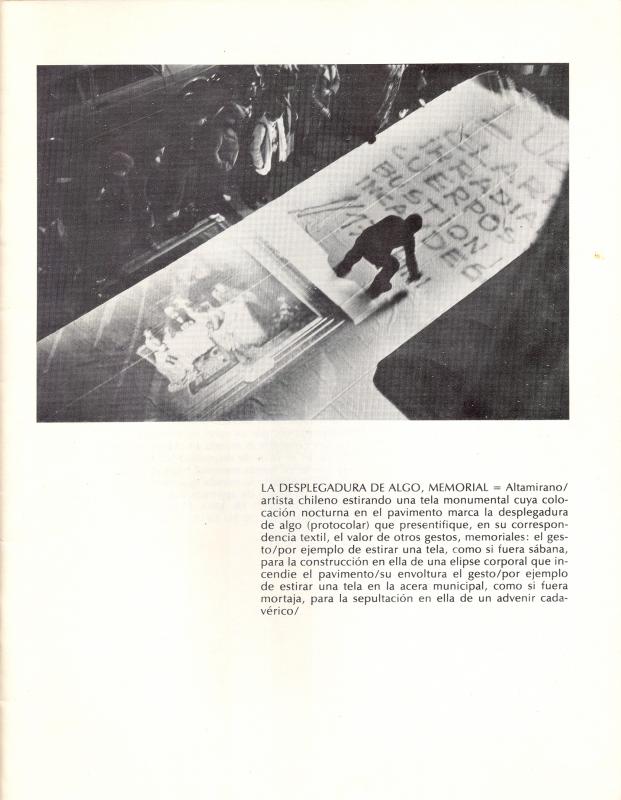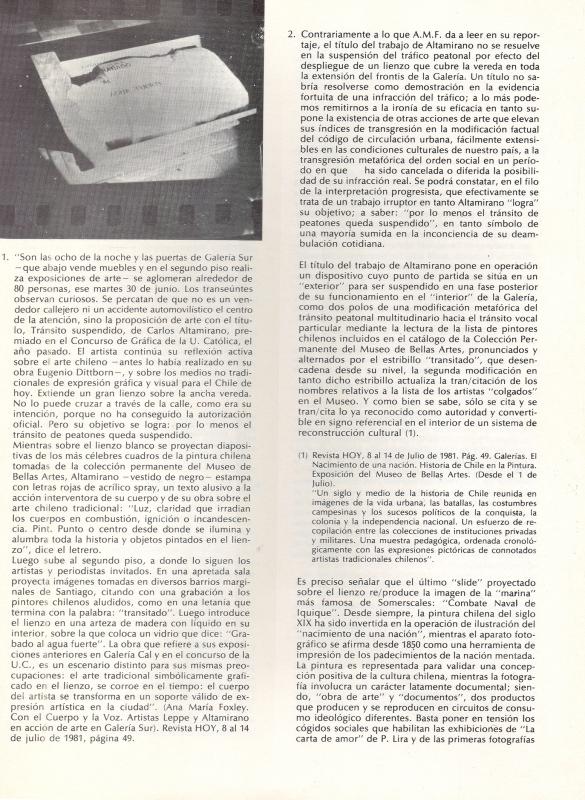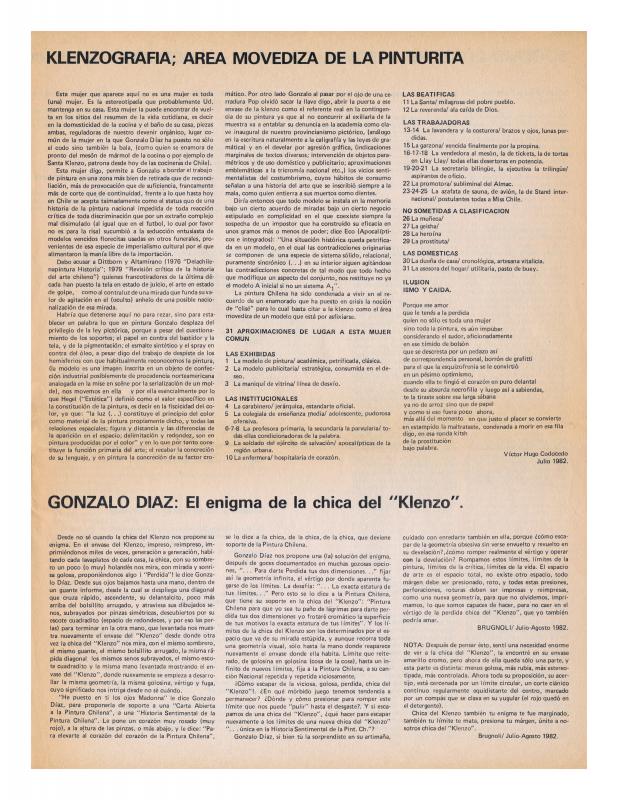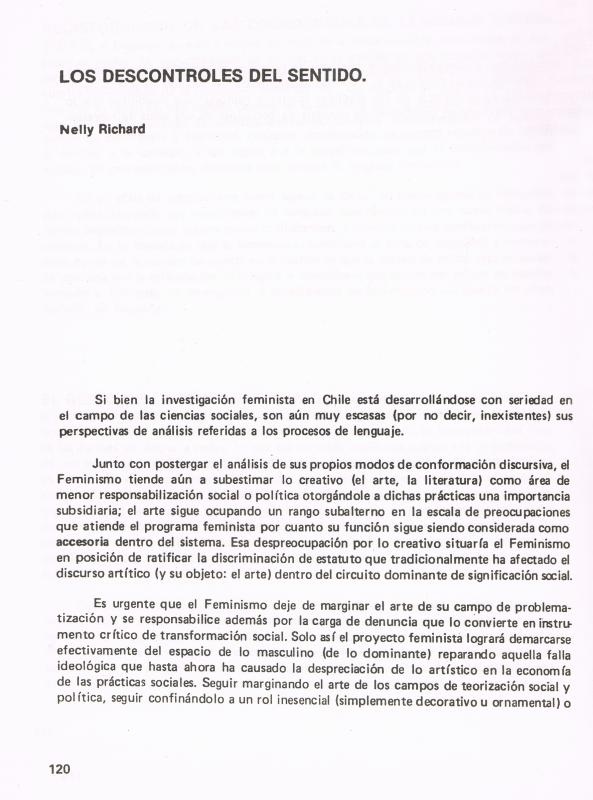“Reivindicaciones de la sentimentalidad como discurso” is an essay written by the theorist and cultural critic Nelly Richard (b. 1948) for Historia Sentimental de la Pintura Chilena, an exhibition of works by Gonzalo Díaz (b. 1947) held in 1982 at the Galería Sur in Santiago, Chile. The essay was published in La Separata (1981–83), which was edited by Richard, artist Carlos Altamirano (b. 1954), and sociologist Fernando Balcells (b. 1950). La Separata was a platform for a debate series focused on art and culture at the time. This text is an important part of a discussion about the art scene during the military dictatorship in Chile (1973–90), which addressed the need to move beyond the traditional framed painting’s privileged role in the realm of art. It was part of the transition to the use of different supports and materials in which the artist’s underlying concept was of fundamental importance.
In her review of Díaz’s exhibition, Richard explains how the event revitalized the Chilean view of the painting tradition. She also draws attention to Díaz’s approach and relates it to the critical works of two other artists, Carlos Altamirano and Eugenio Dittborn (b. 1943). [For more information, see the following in the ICAA Digital Archive: “Return to the Pleasurable” (doc. no. 743686">743686) and “Tránsito suspendido” (doc. no. 731751), both by Nelly Richard (doc. no. 743686">743686); see also “Tránsito suspendido de Carlos Altamirano” (doc. 731739) by Justo Pastor Mellado.]
In his series Historia Sentimental de la Pintura Chilena Gonzalo Díaz includes the image or logo used by the Klenzo company, the manufacturer of a well-known line of cleaning products in Chile. The “Klenzo Girl” is a woman dressed in typical Dutch attire, whom the artist called the Madonna of Chilean art. [See “Klenzografía; área movediza de la pinturita” (doc. no. 731874) by Víctor Hugo Codocedo.] Richard refers to this image and to “sentimentality” to justify her description of Díaz’s paintings as critical challenges that connect the history of Chilean painting with simple popular referents that question the concepts of fine art. The “sentimentality” discourse is associated with romantic love through references to boleros, soap operas, and Corín Tellado (1927–2009) novels that all express the prevailing views on sexual-romantic relationships. Richard is interested in the dominant culture’s dismissal of this collective perspective whose “inferiority” merits no cultural recognition. She equates the dominant culture with masculinity and “sentimentality” with femininity. The Klenzo woman therefore identifies Díaz’s work with femininity and its possible archetypes—“the Madonna, the girlfriend, the housekeeper, the motherland, being in love”—which signify transgression, a theme that Richard explores more deeply in future feminist texts [see, for example, “Los descontroles de los sentidos” (doc. no. 732038)].





